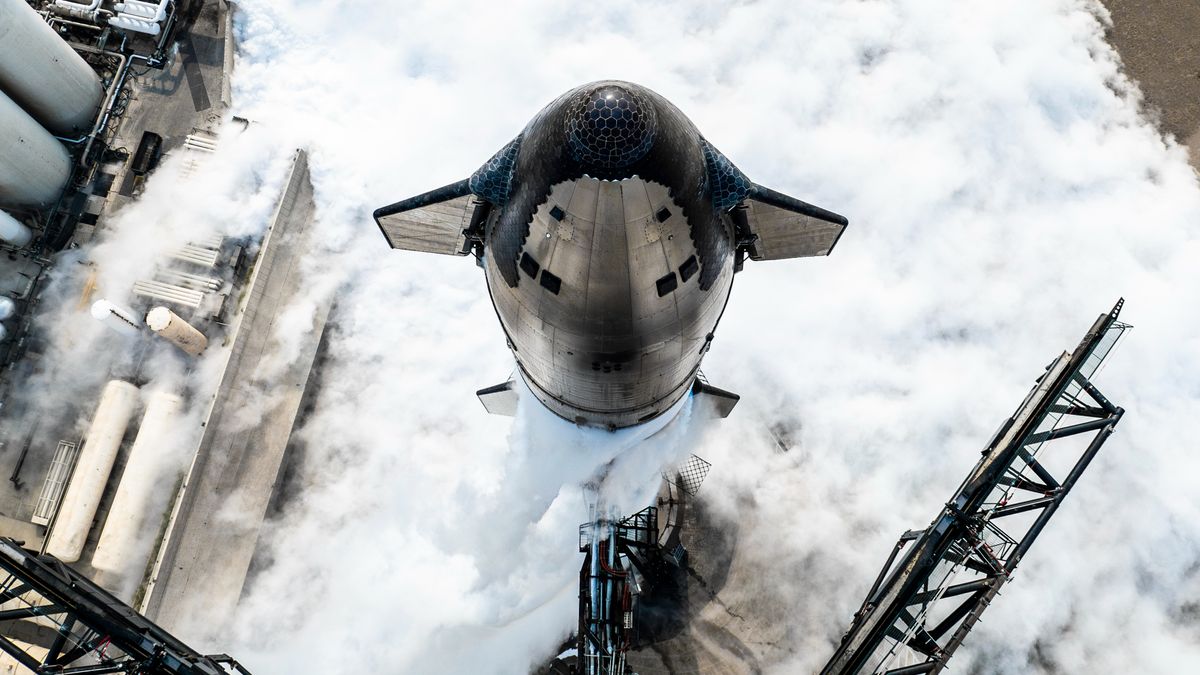SpaceX’s next Starship mega-rocket is officially licensed to fly.
The Federal Aviation Administration (FAA) on Tuesday (June 4) issued a launch license to SpaceX for its Starship Flight 4 test mission, which is currently scheduled to take off from the company’s Starbase facility near Boca Chica no earlier than Thursday, June 6. Beach in South Texas.
“The FAA has approved a license authorization for SpaceX Starship Flight 4,” FAA officials wrote in a statement. “SpaceX met all safety and other licensing requirements for this test flight.”
Related: SpaceX is targeting June 6 for its next Starship mega-rocket launch (Photos)
As the name suggests, SpaceX’s Starship Flight 4 mission is the fourth test flight of the company’s Starship and Super Heavy launch vehicle. When fully assembled, they stand nearly 400 feet tall and are the world’s largest and most powerful rocket. SpaceX designed Starship as a fully reusable ultra-heavy lift launch system for missions to the moon, Mars and beyond. For example, NASA’s Artemis program has selected Starship as the lander that will take Artemis 3 astronauts to the moon’s south pole in 2026.
But before Starship can fly to the moon, SpaceX must prove the shiny, stainless-steel rocket can reach orbit.
The company has conducted three test flights to date: a failed debut in April 2023 that destroyed both SpaceX’s launch pad and the rocket; a second flight in November of that year that also failed to reach space; and the final Starship Flight 3 launch on March 18 this year, which reached space for the first time before the vehicle and its Super Heavy booster were lost before reaching their final splashdown targets.
After each spacecraft launch test, the FAA conducted time-consuming fault investigations and made recommendations that SpaceX should address before each subsequent launch attempt. For Starship Flight 4, SpaceX and the FAA have agreed on a different approach.
“As part of its license modification request, SpaceX proposed three scenarios involving the entry of the spacecraft that would not require an investigation in the event of loss of the vehicle. The FAA approved the scenarios as test-induced damage exceptions after evaluating them as part of the flight safety and flight hazards analyzes and confirming that they met public safety requirements,” FAA officials said in the statement. “If another anomaly occurs with the Starship vehicle, an investigation may be warranted, just as if an anomaly occurs with the Super Heavy booster rocket.”
That agreement suggests SpaceX has identified three likely ways its Starship or Super Heavy could fail (such as loss during reentry) that the company and the FAA agreed would not require a lengthy investigation. The three scenarios did not appear to be detailed in the FAA’s six-page launch license.
For Flight 4, SpaceX plans to fly its Starship and Super Heavy booster on a similar trajectory to its Flight 3 test, a mission that will launch the Starship vehicle to orbital speed and then re-enter the spacecraft over the Indian Ocean. The Super Heavy booster, meanwhile, is expected to return to South Texas and make a controlled “landing” in the Gulf of Mexico.
“The fourth flight test shifts our focus from reaching orbit to demonstrating the ability to return and reuse Starship and Super Heavy,” SpaceX wrote in a mission statement. with the Super Heavy booster, and achieving controlled access to the spaceship.”
In recent weeks, SpaceX has conducted a series of fuel tests for both the Flight 4 Starship and the Super Heavy booster. Both vehicles apparently passed with flying colors.
“Starship is ready to fly,” SpaceX CEO Elon Musk wrote on X (formerly Twitter) on Monday (June 3).
